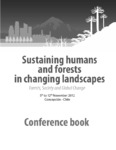Use este identificador para citar ou linkar para este item:
http://www.alice.cnptia.embrapa.br/alice/handle/doc/950902Registro completo de metadados
| Campo DC | Valor | Idioma |
|---|---|---|
| dc.contributor.author | BUNGENSTAB, D. J. | pt_BR |
| dc.contributor.author | ALMEIDA, R. G. de | pt_BR |
| dc.date.accessioned | 2013-02-25T11:11:11Z | pt_BR |
| dc.date.available | 2013-02-25T11:11:11Z | pt_BR |
| dc.date.created | 2013-02-25 | pt_BR |
| dc.date.issued | 2012 | pt_BR |
| dc.identifier.citation | In: IUFRO LANDSCAPE ECOLOGY WORKING GROUP INTERNATIONAL CONFERENCE, 2012, Concepción. Sustaining humans and forests in changing landscapes: forests, society and global change: conference book. Concepción: University of Concepción: Austral University of Chile: Catholic University of Temuco, 2012. | pt_BR |
| dc.identifier.uri | http://www.alice.cnptia.embrapa.br/alice/handle/doc/950902 | pt_BR |
| dc.description | The modern concept of product quality implies also a higher demand for environmental preservation along the production process. Latin America countries, because of their abundance of natural resources and high potential for food, energy, and fiber production, are globally important on discussions regarding agricultural production and environment. Global warming is a very important issue and forests preservation, as well as afforestation, play a major role in this context. Low yielding areas of cattle grazing many times do not explore the potential of areas where natural vegetation was already displaced for beef production. Inefficient systems represent also unnecessary greenhouse gases emissions. On the other hand, integrated silvopastoral or agrosilvopastoral systems, also known as livestock-crop-forest systems, being more efficient, do not only reduce total emissions from the systems, but also sequester carbon from the atmosphere. Even though not yet formally recognized in the international carbon credits market, these systems have a great potential and excellent appeal in the voluntary carbon market, since they synergistically put together interests from farmers, industries, government, and civil society, regarding food production and environmental services. Therefore, farmers? awareness about the strategic importance of being pioneers on adopting these systems is essential, since many indications point out a promising market for carbon sequestration and avoiding emissions from more efficient, integrated cattle systems. | pt_BR |
| dc.language.iso | eng | eng |
| dc.rights | openAccess | eng |
| dc.subject | Integração lavoura-pecuária-floresta | pt_BR |
| dc.subject | ILPF | pt_BR |
| dc.title | Strategic position of integrated systems for agriculture and environment. | pt_BR |
| dc.type | Resumo em anais e proceedings | pt_BR |
| dc.date.updated | 2013-02-25T11:11:11Z | pt_BR |
| dc.subject.thesagro | Meio Ambiente | pt_BR |
| dc.format.extent2 | p.92 | pt_BR |
| riaa.ainfo.id | 950902 | pt_BR |
| riaa.ainfo.lastupdate | 2013-02-25 | pt_BR |
| dc.contributor.institution | DAVI JOSE BUNGENSTAB, CNPGC; ROBERTO GIOLO DE ALMEIDA, CNPGC. | pt_BR |
| Aparece nas coleções: | Resumo em anais de congresso (CNPGC)  | |
Arquivos associados a este item:
| Arquivo | Descrição | Tamanho | Formato | |
|---|---|---|---|---|
| Davi3.pdf | 1,34 MB | Adobe PDF |  Visualizar/Abrir |









